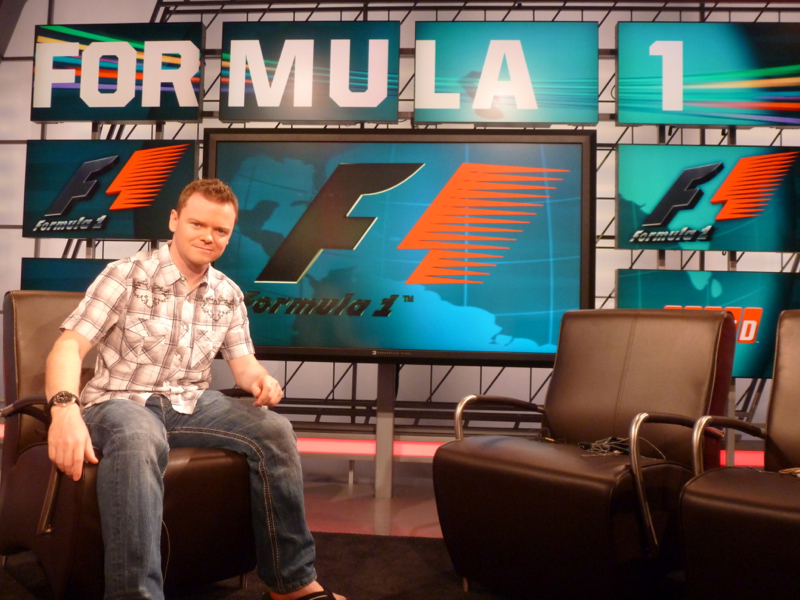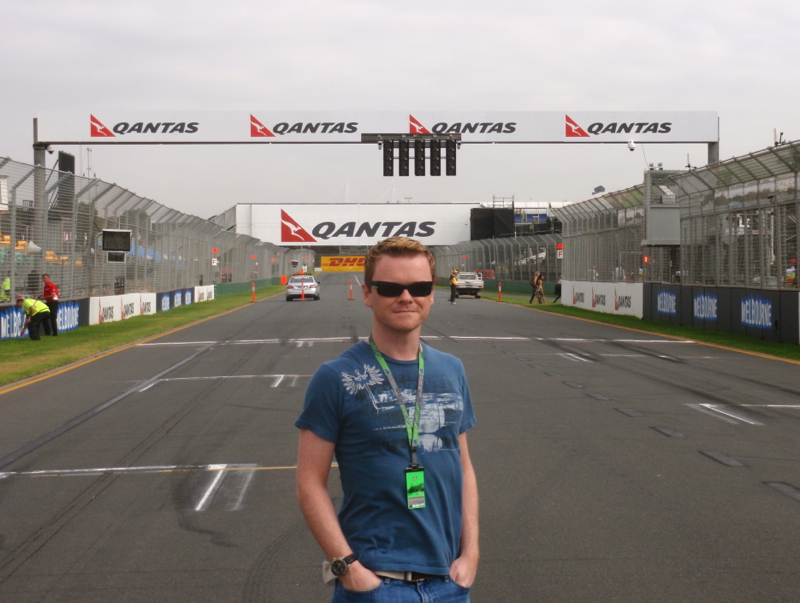Like many this week, you’re probably missing F1 again – so here’s a short quiz:
- When’s the last time all three podium finishers were all of the same nationality?
- When’s the last time four different constructors won the first four races of the season?
- Where do you go for the right question to ask – and have the answer to – as an F1 record’s being broken live?
For the answer to the first two questions, keep reading below – and for the answer to the third, meet Sean Kelly – a man who’s written his own job description in Formula 1.
As a member of SPEED’s research team and F1 statistician, Sean specializes in compiling and studying the reams of F1 statistics and data leading up to a grand prix weekend, then looking for potentially record setting and statistically significant events that broadcasters can turn to as part of their programming.

I met with Sean just before the season opener in San Diego down at Henry’s Pub, a local F1 institution on Sunday mornings, and got a glimpse of exactly what goes into the work he produces at his firm, Virtual Statman, and how that shapes our experience of race broadcasts. It should be said that it helps having the ability to totally recall races, dates, winners and pole sitters for every GP, but a lot of thought has gone into the final product as well.
Before each race, Sean produces a pre-race report covering teams, venues, dates, drivers and cars in a detailed and indexed 18-20 page document that gives race announcers easy access to facts and stats. “It’s important not to overload announcers with too much information” Sean says, “statistics need to be put into a context that doesn’t bog down their broadcasts.”
Sean’s demonstrated his ability soon after we met, and he can put together a story of facts and stats just looking at a photograph or outline of a car, remembering testing locations, liveries, and drivers. And he’s only missed 2 races in the past 25 seasons – not bad for a guy in his early 30’s.
“My first race was in 1987, when I was 6, my brother turned on the Brazilian Grand Prix at home, I just sat and watched – and have been following ever since.” Starting in the early 2000s, he got the idea for this sort of service when he approached SPEED about an idea – one “that would forever change how the sport was covered” – he laughs now when recalling the shot he took by leaving a voicemail with SPEED’s F1 producer Frank Wilson.
But what started out as a project with the broadcasters at SPEED has now turned into a global audience, with 18 different media markets subscribing to the service, and there’s no signs of that slowing down: “The 2006 USGP at Indy was a tipping point for me, when I was introduced to the great Swiss journalist Agnes Carlier, and she really DOES know everyone in the pitlane, from Bernie right down to me. I explained to her what I did and she said ‘Oh, so it would help to meet all the other broadcasters too, no? Come on, I’ll introduce you.’ That day alone I doubled my client list, and that was when things really started to get big. After 3 1/2 years of scraping along, finally I was starting to make a proper living from F1.”
;

Sean’s reports are now used by Sky, BBC, SPEED, RTL and several other television networks worldwide (19 in total at last count), so somewhere in the world during a race, he’s playing an important behind-the-scenes role in what’s said by the leading broadcasters in television:
“Sean is a terrific resource, and you can hear his input in much of what we present on the air on SPEED. To me, the important thing about his array of F1 background is that he can tailor it to the need, whether it’s the announcers, who work on the fly, or the production staff, who prepare broadcast elements in advance. We have several people on our team who have amazing recall when it comes to F1 minutae, and their discussions of a given race occasionally leave David, Steve and me in the dust.” – Bob Varsha, SPEED
So with all his knowledge and recall of the sport, I had to ask Sean – “Don’t you bet on F1?”
“No!” Says Sean – “But my dad is always looking for tips.”
When he’s not compiling the latest data, covering the sport at the F1 circuits or in Charlotte with the SPEED team, Sean’s supporting Liverpool FC or playing the drums – give him a shout out on twitter @virtualstatman and stay tuned for more of his insights next race with more stats and facts as the season heats up.
Quiz: When’s the last time all three podium finishers were all of the same nationality? 1983 When was the last season to have different winners in the first four races? 2003



